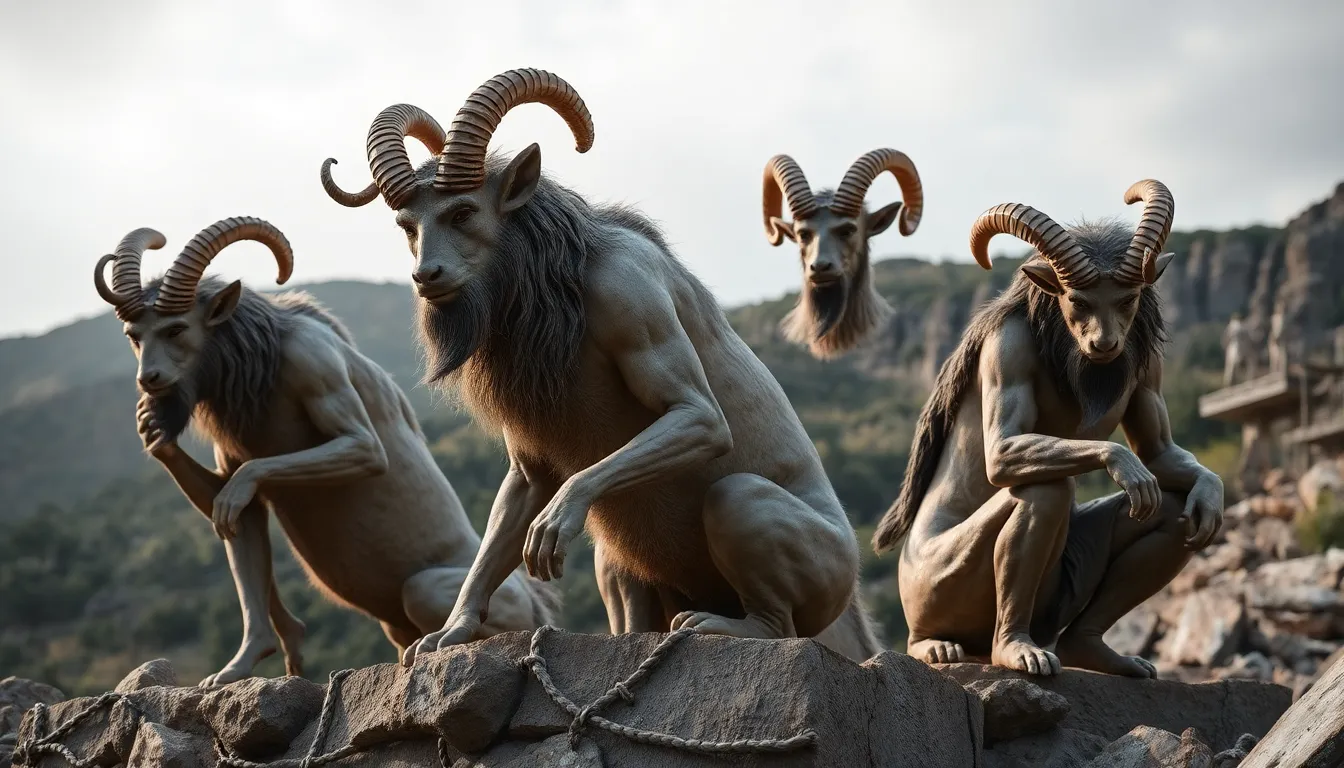Exploring the Origins of Satyrs: From Ancient Greece to Modern Interpretations
I. Introduction
Satyrs are fascinating creatures from Greek mythology, often depicted as half-man and half-goat, symbolizing the wild and untamed aspects of nature. These figures have played a significant role in ancient Greek culture, embodying themes of fertility, revelry, and the pursuit of pleasure. This article aims to trace the evolution of Satyrs, exploring their origins in ancient Greece and their continuing presence in modern interpretations.
II. The Mythological Roots of Satyrs
In Greek mythology, Satyrs are described as woodland spirits who are companions of Dionysus, the god of wine and festivity. They are typically portrayed as having the legs and ears of a goat, along with human torsos and faces. Their physical appearance reflects their connection to nature and the primal instincts of humanity.
Satyrs are often associated with the following:
- Dionysus: As followers of the god of wine, Satyrs participate in ecstatic celebrations, embodying the spirit of revelry.
- Nature: They are seen as protectors of the wilderness, representing the untamed and wild aspects of the natural world.
- Fertility: Their connections to nature also link them to themes of fertility and the cycle of life.
The symbolism of Satyrs extends beyond their physical forms; they represent the untamed spirit within humanity, inviting people to embrace their primal instincts and indulge in the pleasures of life.
III. Satyrs in Ancient Greek Literature and Art
Satyrs have been represented in various forms throughout ancient Greek literature and art. Notable literary sources include:
- Homer: Though not explicitly mentioned, the themes of revelry and nature in the “Odyssey” reflect the spirit of Satyrs.
- Hesiod: In works like “Theogony,” Satyrs are referenced in the context of nature and the divine.
Visually, Satyrs were often depicted in pottery and sculpture, showcasing their playful and sometimes mischievous nature. Their images frequently appear alongside Dionysus, engaging in festivities or pursuing nymphs.
Additionally, Satyr plays were a popular form of theatrical performance in ancient Greece, characterized by comic scenarios and the exploration of human follies. These performances allowed audiences to engage with the lighter, more whimsical aspects of mythology.
IV. Evolution of Satyr Imagery Through the Ages
As time progressed, the imagery and symbolism of Satyrs evolved significantly. The influence of Roman adaptations is notable, as the Romans incorporated Satyr-like figures into their own mythology, often blending them with fauns, who were similarly depicted as half-human, half-goat.
During the Middle Ages and the Renaissance, Satyrs were reinterpreted through a Christian lens, often associated with the devil or as symbols of temptation. This shift altered their portrayal, leading to a more sinister interpretation of their playful nature.
The changes in symbolism and portrayal over time reflect broader societal attitudes towards nature, pleasure, and morality. Satyrs transitioned from being seen as joyous embodiments of nature to figures that represented the darker side of human desire.
V. Satyrs in Folklore and Other Cultures
Satyrs are not unique to Greek mythology; similar beings can be found in various cultural traditions. For example:
- Fauns: In Roman mythology, fauns are closely related to Satyrs, embodying similar traits of mischief and nature.
- Forest Spirits: Many cultures have spirits or deities associated with the forest, often embodying the same themes of fertility and wildness.
Cross-cultural comparisons reveal a shared appreciation for nature’s untamed aspects, as well as the human inclination to personify these forces. The persistence of satyr-like figures in global folklore underscores the universal themes of hedonism and the joy of living in harmony with nature.
VI. Modern Interpretations and Representations
In contemporary literature and film, Satyrs have seen a resurgence, often portrayed as complex characters navigating the balance between civilization and the wild. Examples include:
- Fantasy Literature: Series such as “Percy Jackson” and “The Chronicles of Narnia” feature satyr-like characters who embody both mischief and wisdom.
- Film: Movies like “Pan’s Labyrinth” and adaptations of “The Chronicles of Narnia” bring Satyr figures to life, highlighting their dual nature.
Artistic reimagining of Satyrs continues to evolve, often reflecting modern societal themes such as the struggle between nature and industrialization. The symbolic significance of Satyrs today often revolves around the exploration of human desires and our connection to the natural world.
VII. The Cultural Impact of Satyrs
Satyrs have left an indelible mark on modern art and literature. Their influence can be seen in various forms:
- Art: Many contemporary artists draw upon Satyr imagery to explore themes of nature and humanity.
- Literature: The representation of Satyrs in modern narratives often serves as a critique of societal norms and the human condition.
Moreover, Satyrs remain relevant in discussions about nature and hedonism, prompting reflections on the balance between indulgence and responsibility. They have also found a place in contemporary celebrations and festivals, where themes of revelry and connection to nature are celebrated.
VIII. Conclusion
The enduring nature of Satyrs in mythology and culture highlights their significance in human storytelling. From their origins in ancient Greece to their modern interpretations, Satyrs have transformed while retaining their essential qualities.
This transformation speaks to the adaptability of mythological figures, reflecting changing societal values and the complexity of human nature. Ultimately, Satyrs continue to serve as a lens through which we can explore our desires, our relationship with nature, and the timeless quest for joy in life.




